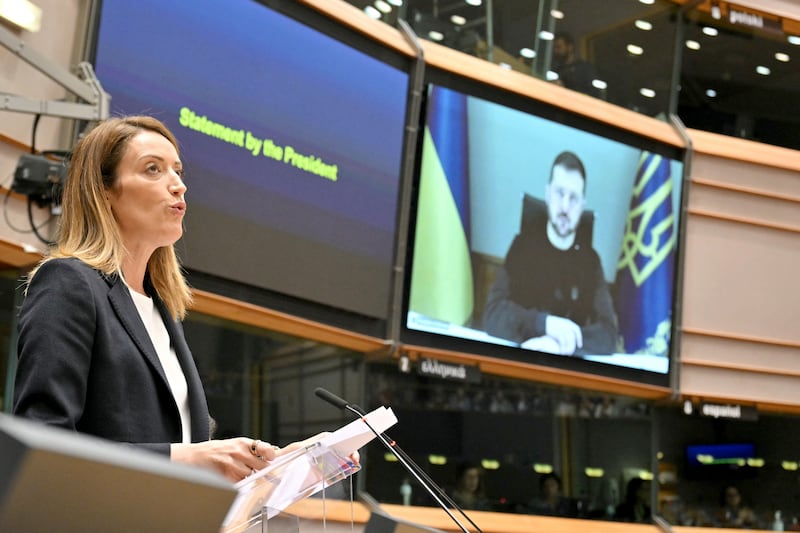Ukraine hit a Russian arms depot with a US-supplied long-range missile in its first use of such a weapon inside Russia, as the Kremlin loosened its guidelines on when it could launch a nuclear strike against an adversary.
As Ukraine marked 1,000 days since the start of Russia’s devastating full-scale invasion, Ukrainian, US and Russian officials said Kyiv’s forces had hit Russia with an Atacms ballistic missile, barely 48 hours after news broke that the White House had lifted restrictions that limited use of the weapon to targets in occupied parts of Ukraine.
Russia’s defence ministry said its forces shot down five Atacms and debris from a sixth landed on an unspecified military facility in the western Bryansk region.
Kyiv did not say how many Atacms it fired but claimed to have hit an arms depot about 110km inside Russia. Video posted on social media showed a huge blast at night followed by smaller detonations, suggesting many weapons were exploding.
READ MORE
“It is clear that without certain key factors, Russia will lack real motivation to engage in meaningful negotiations: without fires at its ammunition depots on Russian territory, without disrupted military logistics, without destroyed Russian airbases, without its capabilities to produce missiles and drones being eliminated, and without its assets being confiscated,” said Ukrainian president Volodymyr Zelenskiy.
“We must do everything to end this war – fairly, justly and, of course, together. A thousand days of war is a tremendous challenge. Ukraine deserves to make the next year the year of peace,” he told the European Parliament in a live video address.

Heavy fighting continued in eastern Ukraine and the Kursk border region of Russia, where North Korean troops are now supporting Moscow’s forces – a development that was reportedly a key factor in prompting the US policy change on Atacms.
Russian president Vladimir Putin has said the use of long-range western-supplied weapons against his country would mean western states were directly involved in Europe’s biggest war since 1945.
“The fact that multiple Atacms were used last night against the Bryansk region signals that they want escalation. You see, it is impossible to use these high-tech missiles without the Americans,” said Russian foreign minister Sergei Lavrov, claiming that the attack marked “a qualitatively new phase in the western war against Russia”.
In Moscow, Mr Putin signed off on changes to Russian nuclear doctrine to allow for a nuclear strike in response to an attack by a non-nuclear adversary if it is backed by a nuclear power, and if Russia or its ally Belarus faced “a critical threat to their sovereignty or territorial integrity”.
The previous version of the doctrine said Russia could launch a nuclear strike if it faced a nuclear attack or an existential threat.
“Observing no changes to Russia’s nuclear posture, we have not seen any reason to adjust our own nuclear posture or doctrine in response to Russia’s statements today,” the White House national security council said, while condemning “more of the same irresponsible rhetoric from Russia.”
Speaking alongside Polish, French and Italian counterparts in Warsaw, German foreign minister Annalena Baerbock said Mr Putin was “playing with our fear” and admitted that Berlin had been cowed and duped by Russia after it annexed Crimea and fomented fighting in eastern Ukraine in 2014.
“Germany in particular made the mistake back then ... of allowing itself to be intimidated by this fear and, above all, not listening to its partners, especially our eastern European partners, who made it clear at the time: we must not rely on promises from the Kremlin. We must invest in our own security and protection,” she said.
- Sign up for push alerts and have the best news, analysis and comment delivered directly to your phone
- Join The Irish Times on WhatsApp and stay up to date
- Listen to our Inside Politics podcast for the best political chat and analysis













